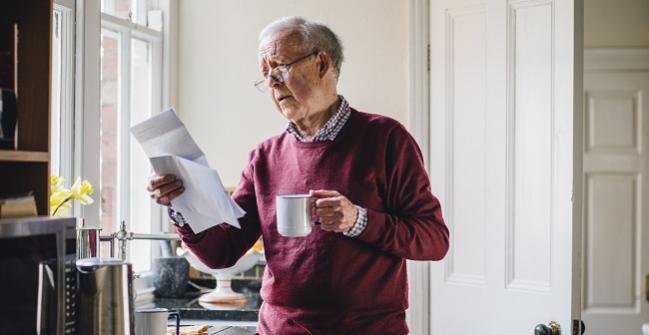Financial Hardship From Medical Bills a ‘Growing Menace’ for ASCVD Patients
This problem is too big to ignore any longer, say investigators, who point out that the vast majority of people under financial strain are insured.

Nearly half of all people with atherosclerotic cardiovascular disease (ASCVD) report significant financial strain from medical bills, and roughly one in five are unable to pay their bills at all, according to a new analysis.
Although individuals without insurance and low-income families are hit particularly hard by medical bills, the vast majority of those under financial hardship have insurance, say investigators. As a result, many ASCVD patients are going without basic amenities, such as food or medication.
“These problems are just the tip of the iceberg, and our findings are illuminating a much bigger problem that lurks in the shadows,” lead investigator Javier Valero-Elizondo, MD (Yale University, New Haven, CT), told TCTMD in an email. “We hope that these preliminary results should lead to a much broader conversation about gaining much-needed insights into health and nonhealth consequences faced by not only the patients suffering from cardiovascular disease but also by their family.”
Senior investigator Khurram Nasir, MD (Yale University/Yale New Haven Health), made a similar argument. “Our study sends a strong message to all stakeholders in our cardiology community that financial hardship induced by medical bills isn’t just a rhetoric for millions of patients and their families suffering from heart disease and stroke, and something we can no longer afford to ignore,” he said.
The study was published online ahead of February 19, 2019, issue of the Journal of the American College of Cardiology.
Significant Out-of-Pocket Spending
Medical care accompanying ASCVD comes with significant out-of-pocket spending, note the researchers, and even patients with health insurance are under financial duress because of the high costs associated with insurance, including deductibles and copays. To get a sense of the national burden of financial hardship of medical bills among individuals with ASCVD, the group analyzed 2013-2017 data from the National Health Interview Survey (NHIS).
The NHIS sample included 123,706 adults aged 18 to 64 years, of whom 6,160 reported a diagnosis of ASCVD. Nearly 90% of those included in the analysis had medical insurance. Of those with ASCVD, 2,741 adults, representing 3.9 million US individuals, reported financial hardship from their medical bills. Further, 1,229 adults, representing 1.64 million individuals with ASCVD, said they couldn’t pay their medical bills at all.
Given that the majority of individuals with ASCVD suffering from financial hardship were insured, this suggests inadequate protection with greater cost shifting towards patients and their families, say researchers.
“I think that the current study clearly highlights the financial model of our system is failing the majority of those for whom it exists to serve,” Nasir told TCTMD in an email. “These sobering data will continue to drive public opinion and possibly stimulate policy makers to consider additional options for financing increasing healthcare needs of the US population. For example, in the US, the annual family premiums for employer-sponsored health insurance is close to $20,000 per year, with workers contributing $5,000 per year.” One could argue that even if half of this amount is diverted, it could support an efficient public health option or Medicare for all, he added.
The group also assessed financial distress among those who had trouble paying, or could not pay, their medical bills. Financial distress was defined with a series of questions to assess anxiety over money, such as worries about saving for retirement, maintaining standard of living, paying monthly bills, or paying the mortgage, rent, or housing costs. For those who couldn’t pay their medical bills, 71.4% reported a high degree of financial stress, 52.8% reported food insecurity, and 48.6% reported skipping or delaying filling prescriptions (or taking less medicine).
To TCTMD, Nasir said cardiologists can play a role by screening patients at risk for financial hardship and providing treatment alternatives that may cost less and by avoiding procedures and interventions with marginal benefit. Additionally, physicians can play a “major role in influencing national healthcare policies, such as capping out-of-pocket expenses for low-income families and ensuring price transparency to influence physician prescribing behaviors and patient informed choices,” said Nasir. Physicians can also work with local support programs to provide financial assistance to those in need.
“While we don’t have all the solutions for this growing menace, I feel this brewing burden on millions of families across the nation will act as a key catalyst toward driving a major policy shift toward exploration of a single-payer system in the US,” he said.
Michael O’Riordan is the Managing Editor for TCTMD. He completed his undergraduate degrees at Queen’s University in Kingston, ON, and…
Read Full BioSources
Valero-Elizondo J, Khera R, Saxena A, et al. Financial hardship from medical bills among nonelderly US adults with atherosclerotic cardiovascular disease. J Am Coll Cardiol. 2019;73:727-732.
Disclosures
- Valero-Elizondo and Nasir report no relevant conflicts of interest.


Comments